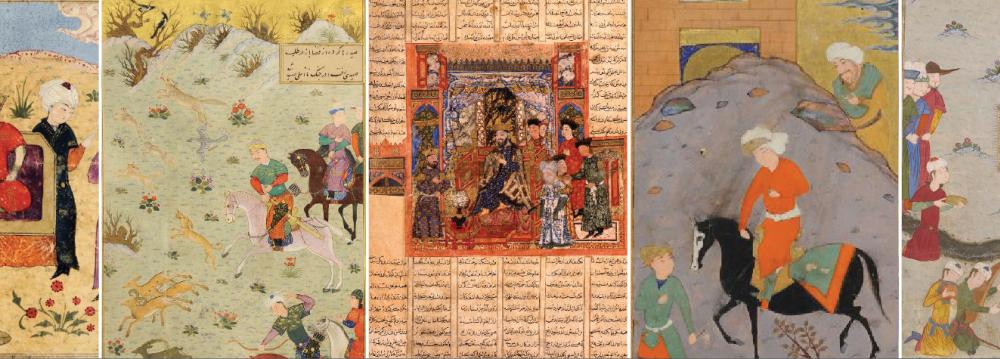An exhibition of Persian classic paintings will be held at the Harvard Art Museums, part of Harvard University in Massachusetts, the US, May 20-August 13.
The exhibition features illustrated Persian manuscripts and detached folios collected in the early 20th century by Harvard alumnus Bernard Berenson (1865–1959), the famous American art historian and connoisseur of Italian Renaissance painting, Honaronline reported.
Berenson prized these works at his home in Florence, Villa I Tatti, which he bequeathed to Harvard and which now serves as the Harvard University Center for Italian Renaissance Studies.
According to the website of the museums, the US exhibit offers the first opportunity to see the works outside Italy. They are grouped according to the style in which each was created between the 14th and 17th centuries in Iran and Central Asia.
Additional related works from the Harvard Art Museums, the Morgan Library and Museum, the Museum of Fine Arts, Boston, and the Isabella Stewart Gardner Museum will also be displayed at the show.
The works were collected by close associates of Berenson who shared his enthusiasm for Persian painting, at a time when this area of art was gaining currency among collectors.
Shedding new light on Berenson’s little-known and understudied Persian collection, the exhibition highlights current research from various scholars on Berenson’s collecting interests and the artistic and cultural significance of the objects.
Among the works to be showcased at the event, there are several pages from different editions of the Shahnameh (Book of Kings), the long epic poem written by the celebrated Persian poet Ferdowsi (940-1020).
On display also will be Illustrated folios from the Great Ilkhanid Shahnameh, the most elaborate and luxurious manuscript of the Ilkhanid period (a division of the Mongol Empire which ruled Iran and the neighboring territories 1256-1353).
Illustrated Folios From Zafarnama
Illustrated folios from the Zafarnama (Book of Victory), a biography of Timur completed by the Persian historian Sharaf ad-Din Ali Yazdi in 1426, will also be exhibited.
Besides, there will be an illustrated manuscript of an Anthology of Persian Treatises for Prince Baysonghor (1397-1433), a prince from the house of the Timurid Empire (1370-1507). He was known as a patron of arts and architecture, the leading patron of the Persian miniature in Persia, commissioning the Baysonghor Shahnameh and other works, as well as being a prominent calligrapher.
An illustrated manuscript of Shirin and Farhad, folklore and romantic story by the Persian poet Vahshi Bafqi (1532-1583), is also found in the collection.
The paintings show different legendary characters of Shahnameh including Prince Esfandiyar and his father King Gushtasp, Kay Kavus and his grandson Kay Khusraw as well as real historical figures such as Timur, the founder of the Timurid Empire in Persia and Central Asia and the first ruler in the Timurid dynasty, and Alexander, king of the ancient kingdom of Macedonia.


